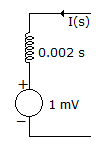Electronics and Communication Engineering - Electronic Devices and Circuits
Exercise : Electronic Devices and Circuits - Section 7
- Electronic Devices and Circuits - Section 14
- Electronic Devices and Circuits - Section 27
- Electronic Devices and Circuits - Section 26
- Electronic Devices and Circuits - Section 25
- Electronic Devices and Circuits - Section 24
- Electronic Devices and Circuits - Section 23
- Electronic Devices and Circuits - Section 22
- Electronic Devices and Circuits - Section 21
- Electronic Devices and Circuits - Section 20
- Electronic Devices and Circuits - Section 19
- Electronic Devices and Circuits - Section 18
- Electronic Devices and Circuits - Section 17
- Electronic Devices and Circuits - Section 16
- Electronic Devices and Circuits - Section 15
- Electronic Devices and Circuits - Section 1
- Electronic Devices and Circuits - Section 13
- Electronic Devices and Circuits - Section 12
- Electronic Devices and Circuits - Section 11
- Electronic Devices and Circuits - Section 10
- Electronic Devices and Circuits - Section 9
- Electronic Devices and Circuits - Section 8
- Electronic Devices and Circuits - Section 7
- Electronic Devices and Circuits - Section 6
- Electronic Devices and Circuits - Section 5
- Electronic Devices and Circuits - Section 4
- Electronic Devices and Circuits - Section 3
- Electronic Devices and Circuits - Section 2
26.
An RLC series circuit has R = 30 Ω, XL = 30 Ω and XC = 30 W. Its impedance is
Answer: Option
Explanation:
Z = 30 + j (30 - 30) = 30∠0 Ω.
27.
R, L and C are in parallel. The circuit is switched on to a constant current source I at t = 0. At t = ∞ the current through inductance is I.
Answer: Option
Explanation:
At t = ∞ inductance behaves as short-circuit.
28.
A 2 mH inductor with some initial current can be represented as shown below, where s is the Laplace transform variable. The value of initial current is


Answer: Option
Explanation:
Initial current iL(0+) or 


 .
.
29.
As temperature increases, the temperature coefficient of metals increases.
Answer: Option
Explanation:
As temperature increases the temperature coefficient of metal decreases.
30.
In a 3 phase system, the zero sequence component of line to line voltages is zero
Answer: Option
Explanation:
Zero sequence component of line to line voltage is always zero irrespective of degree of unbalance.
Quick links
Quantitative Aptitude
Verbal (English)
Reasoning
Programming
Interview
Placement Papers